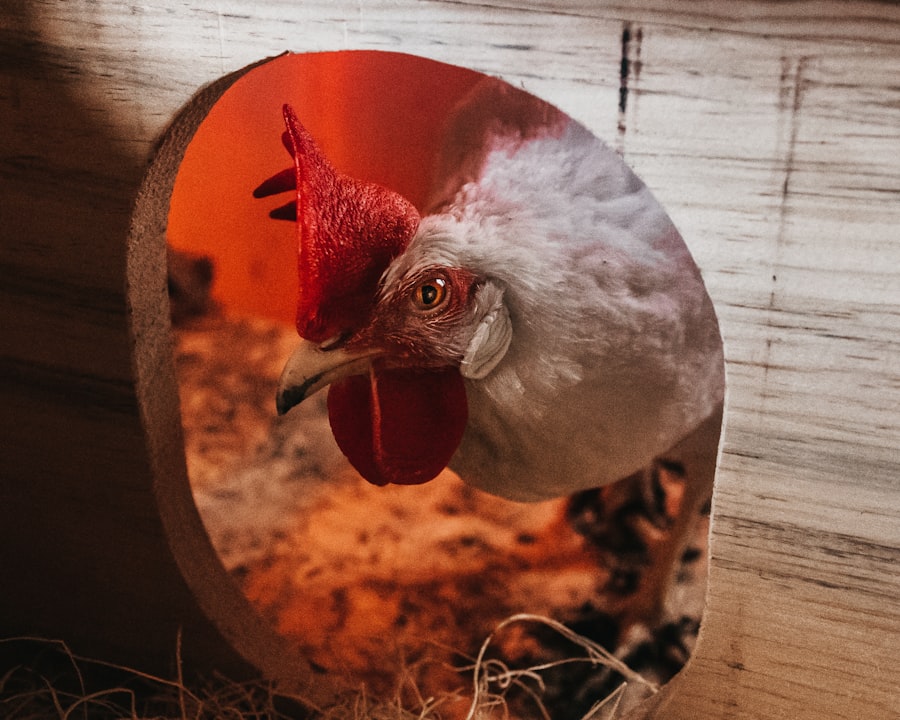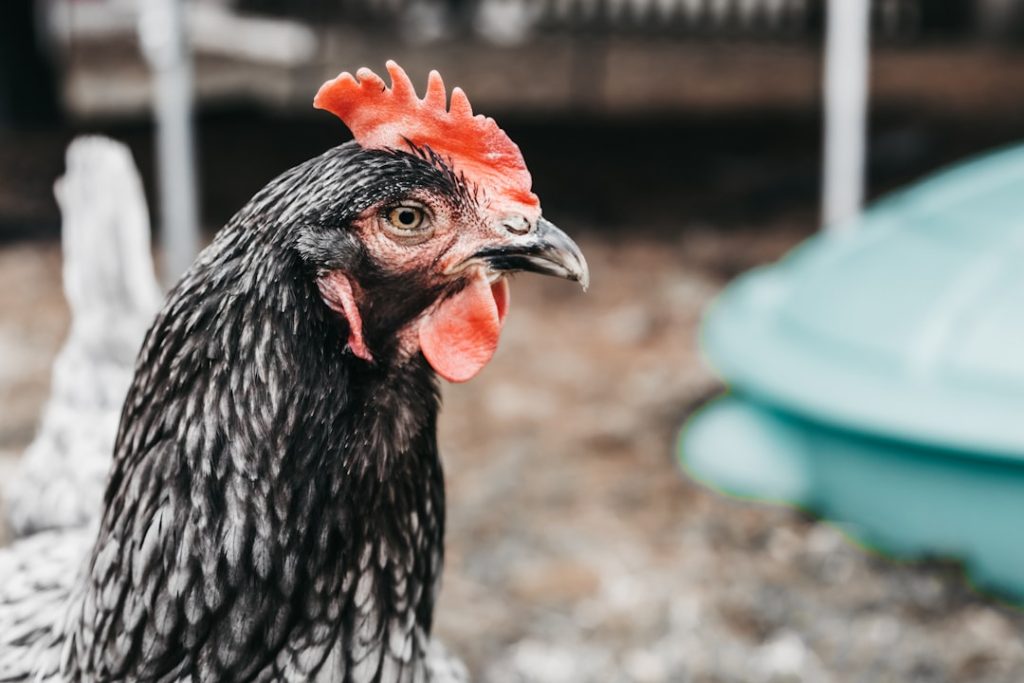Village chicken farming, also known as backyard chicken farming, is a traditional method of raising chickens in rural areas. This practice is widespread in many parts of the world and serves as a crucial source of nutrition and income for rural families. Village chicken farming typically involves small-scale production, with chickens raised in free-range or semi-intensive systems.
The characteristics of village chicken farming include:
1. Low input costs
2. Utilization of locally available resources
3.
Adaptation to diverse environmental conditions
4. Integration with other farming activities
Benefits of village chicken farming include:
1. Provision of protein-rich food for households
2.
Generation of income through egg and meat sales
3. Contribution to food security in rural communities
4. Empowerment of women, who often manage these operations
Despite its advantages, village chicken farming faces several challenges:
1.
Disease management
2. Limited access to markets
3. Lack of proper infrastructure and resources
4.
Predation and theft
Village chicken farming plays a significant role in rural livelihoods and food security. It is a sustainable practice that utilizes local resources and requires minimal external inputs. However, to maximize its potential, improvements in management practices, disease control, and market access are necessary.
Table of Contents
- 1 Selecting the Right Breeds for Village Chicken Farming
- 2 Building the Right Infrastructure for Village Chicken Farming
- 3 Feeding and Nutrition for Village Chickens
- 4 Health and Disease Management for Village Chickens
- 5 Marketing and Selling Village Chicken Products
- 6 Financial Planning and Management for Village Chicken Farming
- 7 FAQs
- 7.1 What is village chicken farming?
- 7.2 What are the benefits of keeping village chickens for business?
- 7.3 What are the key considerations for starting a village chicken farming business?
- 7.4 What are the common challenges in village chicken farming?
- 7.5 What are some best practices for successful village chicken farming?
- 7.6 Are there any resources available for learning about village chicken farming for business?
Key Takeaways
- Village chicken farming is a sustainable and profitable venture for rural communities
- Selecting the right breed is crucial for the success of village chicken farming
- Building proper infrastructure is essential for the health and well-being of village chickens
- Providing proper nutrition and feeding is key to the growth and productivity of village chickens
- Health management and disease prevention are critical for the success of village chicken farming
- Effective marketing and selling strategies are important for generating income from village chicken products
- Proper financial planning and management are essential for the long-term success of village chicken farming
Selecting the Right Breeds for Village Chicken Farming
Popular Breeds for Village Chicken Farming
Some popular breeds for village chicken farming include the Rhode Island Red, Plymouth Rock, and Sussex. These breeds are known for their hardiness, excellent foraging abilities, and ability to thrive in outdoor environments. Additionally, local indigenous breeds are often well-suited to village chicken farming, as they have evolved to withstand the local climate and environmental conditions.
Key Factors to Consider When Selecting Breeds
When selecting breeds for village chicken farming, it’s crucial to consider factors such as egg production, meat quality, and resistance to common diseases in the area. It’s also essential to consider the sourcing of chicks or hatching eggs. Obtaining chicks or eggs from reputable breeders or hatcheries ensures the health and quality of the birds.
Long-term Success and Sustainability
Proper selection of breeds is vital for the long-term success and sustainability of village chicken farming. By choosing the right breeds, farmers can ensure a healthy and productive flock, which is essential for a profitable and sustainable enterprise.
Building the Right Infrastructure for Village Chicken Farming

Building the right infrastructure is essential for successful village chicken farming. The infrastructure includes housing, fencing, and other facilities that provide a suitable environment for the chickens to thrive. In free-range or semi-intensive systems, housing should provide protection from predators and adverse weather conditions while allowing the chickens to move freely and exhibit natural behaviors.
The housing for village chickens can range from simple shelters made of locally available materials to more sophisticated structures with nesting boxes and perches. The size of the housing should be adequate to accommodate the number of chickens being raised, with sufficient space for roosting and nesting. Additionally, proper ventilation and lighting are important considerations in housing design to ensure good air quality and natural light for the chickens.
Fencing is another important aspect of infrastructure in village chicken farming. Fencing helps to keep the chickens within designated areas and protects them from predators such as foxes, dogs, and birds of prey. Fencing can be made from materials such as wire mesh, bamboo, or wooden posts, depending on local availability and cost.
Other facilities such as feeders, waterers, and egg collection areas should also be considered when building infrastructure for village chicken farming. These facilities should be designed to be easily accessible and cleaned to maintain good hygiene and health for the chickens. Proper infrastructure is essential for creating a conducive environment for village chickens to thrive and produce high-quality eggs and meat.
Feeding and Nutrition for Village Chickens
Feeding and nutrition play a crucial role in the health and productivity of village chickens. In free-range or semi-intensive systems, chickens have access to a variety of natural foods such as insects, seeds, and vegetation. However, supplemental feeding is often necessary to ensure that chickens receive a balanced diet that meets their nutritional requirements.
A balanced diet for village chickens should include a combination of grains, protein sources, vitamins, and minerals. Commonly used grains include maize, sorghum, and millet, which are often locally available and affordable in rural areas. Protein sources such as soybean meal or fish meal can be added to the diet to meet the chickens’ protein requirements for growth and egg production.
In addition to grains and protein sources, providing access to grit and oyster shell is important for village chickens. Grit helps chickens grind their food in their gizzards, while oyster shell provides calcium for strong eggshells. Access to clean water is also essential for village chickens’ health and digestion.
Feeding practices should be tailored to the specific needs of the chickens at different stages of growth, such as chicks, growers, layers, and broilers. Proper feeding and nutrition management are essential for maximizing the growth rate, egg production, and overall health of village chickens.
Health and Disease Management for Village Chickens
Health and disease management are critical aspects of village chicken farming. Village chickens are susceptible to a range of diseases and parasites that can significantly impact their productivity and overall well-being. Preventive measures such as good hygiene practices, vaccination programs, and regular health monitoring are essential for maintaining healthy flocks.
One common disease that affects village chickens is Newcastle disease, a highly contagious viral infection that can cause high mortality rates in unvaccinated flocks. Vaccination against Newcastle disease is crucial for protecting village chickens from this deadly disease. Other common diseases in village chickens include infectious bronchitis, coccidiosis, and external parasites such as mites and lice.
In addition to vaccination programs, good biosecurity practices can help prevent the introduction and spread of diseases in village chicken flocks. This includes measures such as controlling access to the farm, disinfecting equipment and footwear, and quarantining new birds before introducing them to the flock. Regular health monitoring by trained personnel or veterinarians can help identify potential health issues early and implement appropriate interventions.
It is important for farmers to be knowledgeable about common diseases and their symptoms in order to take prompt action when necessary. Health and disease management are essential components of successful village chicken farming and contribute to the overall sustainability of the enterprise.
Marketing and Selling Village Chicken Products

Understanding Market Demand and Consumer Preferences
Marketing and selling village chicken products require careful planning and consideration of market demand and consumer preferences. In rural areas, farmers often rely on local networks or direct sales to consumers due to limited access to formal markets. Understanding market trends and consumer preferences can help farmers identify opportunities for selling eggs, meat, or live birds.
Value Addition and Differentiation
One approach to marketing village chicken products is through value addition, such as processing chicken meat into products like sausages or smoked chicken. Value-added products can attract higher prices and appeal to a wider range of consumers. Additionally, promoting the unique qualities of village chicken products, such as their free-range upbringing and natural diet, can differentiate them from commercial poultry products.
Direct Marketing and Food Safety Compliance
Direct marketing through farmer’s markets, community events, or local stores can also be effective in reaching consumers who value locally produced food. Building relationships with local restaurants or catering businesses can create opportunities for supplying village chicken products to a wider customer base. In addition to marketing strategies, it is important for farmers to comply with food safety regulations and standards when selling village chicken products, including ensuring proper handling, storage, and labeling of products to meet hygiene and quality requirements.
Financial Planning and Management for Village Chicken Farming
Financial planning and management are essential components of successful village chicken farming. Like any business venture, village chicken farming requires careful budgeting, cost analysis, and financial decision-making to ensure profitability and sustainability. One aspect of financial planning is determining the initial investment required for infrastructure, equipment, breeding stock, feed, and other inputs.
Farmers should also consider ongoing operational costs such as labor, veterinary care, feed supplies, and marketing expenses. Developing a comprehensive budget that accounts for both initial investment and ongoing costs can help farmers make informed decisions about their financial resources. In addition to budgeting, financial management involves monitoring income and expenses, tracking production costs per unit (e.g., per egg or per kilogram of meat), and analyzing profitability.
Farmers should keep detailed records of their financial transactions to assess the performance of their enterprise over time. Risk management is another important aspect of financial planning for village chicken farming. Farmers should consider potential risks such as disease outbreaks, market fluctuations, or adverse weather conditions that could impact their income or production levels.
Developing contingency plans or diversifying income streams can help mitigate these risks. Accessing financial resources such as loans or grants may be necessary for some farmers to start or expand their village chicken farming enterprise. Understanding financial options available from government programs or financial institutions can help farmers secure the necessary capital for their operations.
Overall, effective financial planning and management are essential for the long-term success of village chicken farming. By carefully analyzing costs, monitoring income streams, managing risks, and accessing financial resources when needed, farmers can build a sustainable business that contributes to their livelihoods and the overall economic development of rural communities.
If you’re interested in learning more about how to keep village chickens for business, you may also want to check out this article on chicken coop portage. This article provides valuable information on how to properly set up a chicken coop for your village chickens, which is essential for their health and productivity.
FAQs
What is village chicken farming?
Village chicken farming refers to the practice of raising chickens in rural or village settings for the purpose of producing eggs and meat for consumption or sale.
What are the benefits of keeping village chickens for business?
Keeping village chickens for business can provide a source of income, food security, and employment opportunities in rural areas. It also contributes to sustainable agricultural practices and supports local economies.
What are the key considerations for starting a village chicken farming business?
Key considerations for starting a village chicken farming business include acquiring suitable breeds, providing proper housing and nutrition, implementing biosecurity measures, and establishing market channels for selling eggs and meat.
What are the common challenges in village chicken farming?
Common challenges in village chicken farming include disease outbreaks, predation, limited access to veterinary services, and market fluctuations. Additionally, inadequate knowledge and skills in poultry management can also pose challenges.
What are some best practices for successful village chicken farming?
Best practices for successful village chicken farming include proper housing and sanitation, regular vaccination and deworming, balanced nutrition, and access to clean water. Additionally, implementing good management practices and record-keeping can contribute to success.
Are there any resources available for learning about village chicken farming for business?
Yes, there are various resources available, including training programs, workshops, and publications such as the “How to Keep Village Chickens for Business” PDF, which provide valuable information on poultry management, disease control, and business aspects of village chicken farming.
Meet Walter, the feathered-friend fanatic of Florida! Nestled in the sunshine state, Walter struts through life with his feathered companions, clucking his way to happiness. With a coop that’s fancier than a five-star hotel, he’s the Don Juan of the chicken world. When he’s not teaching his hens to do the cha-cha, you’ll find him in a heated debate with his prized rooster, Sir Clucks-a-Lot. Walter’s poultry passion is no yolk; he’s the sunny-side-up guy you never knew you needed in your flock of friends!








